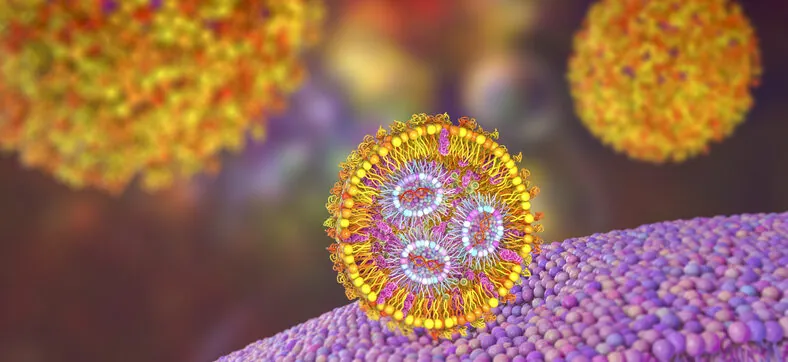
Breakthrough in Prenatal Gene Therapy: New LNP Technology Offers Hope for Neurodevelopmental Disorders
2024-10-25
Author: Yu
Groundbreaking Study
A groundbreaking study from scientists at the University of California, Davis, and the University of California, Berkeley, has unveiled a revolutionary delivery system for gene therapy that could transform treatment for neurodevelopmental disorders in fetuses. Traditional carriers for gene editing can pose a risk of toxicity, making treatments for brain cells in developing fetuses particularly challenging. However, researchers are developing less toxic carriers that safely deliver genetic material to brain cells while minimizing the risk of inflammatory responses.
Novel LNP Technology
In their recent publication in ACS Nano, titled 'Widespread Gene Editing in the Brain via In Utero Delivery of mRNA Using Acid-Degradable Lipid Nanoparticles,' the scientists detailed how their novel lipid nanoparticles (LNPs)—engineered to degrade quickly—can effectively deliver mRNA for gene editing enzymes to the fetal mouse brain. This promising technique resulted in successful gene editing among brain cells.
Testing and Applications
The LNP technology was tested using a mouse model of Angelman syndrome, a rare genetic disorder that significantly impacts neurodevelopment. The researchers believe their advancements could potentially be applied to treat a range of genetic neurodevelopmental conditions, including Rett syndrome and Hurler syndrome.
Expert Insights
Dr. Aijun Wang, one of the senior authors of the study and a professor of surgery and biomedical engineering at UC Davis, emphasized the potential implications of this approach: 'This tool can profoundly impact neurodevelopmental conditions, allowing us to correct genetic anomalies during critical periods of brain development.'
Collaboration for Innovation
The collaborative effort between scientists at UC Davis, led by Wang, and UC Berkeley, led by Dr. Niren Murthy, aims to develop this technology into therapeutic options for conditions detectable through prenatal testing. By administering these treatments in utero, harmful repercussions during later stages of cell development could be mitigated.
Previous Research
Earlier, Wang, Murthy, and their team had demonstrated the efficacy of engineered rapidly hydrolysable LNPs (RD-LNPs) that enhance mRNA delivery. Their earlier research, published in Nature Nanotechnology, revealed that these new LNPs significantly outperformed conventional lipid nanoparticles in delivering mRNA to key organs, including the brain.
In Utero Injection Methodology
In the current study, the researchers employed in utero intracerebroventricular (ICV) injection of their LNP-mRNA technology. Remarkably, this method allowed for the transfection of neural stem and progenitor cells in the fetal brain, with observed wellbeing post-injection due to the nanoparticles’ characteristics of dense PEGylation and acid degradability.
Significant Results
The team successfully delivered guide RNA and Cas9 mRNA to edit genes in a significant portion of the fetal brain. Their results indicated that about 30% of the neural stem cells in the mouse model successfully underwent gene editing. Dr. Wang declared, 'Transfecting 30% of the whole brain, especially the stem cells, is a big deal. As the fetus develops, these cells migrate and spread throughout the brain.'
Fetal Development and Neuron Formation
As the fetal development progressed, the engineered stem cells proliferated, leading to the formation of crucial parts of the central nervous system. The study found that over 60% of neurons in the hippocampus and 40% of neurons in the cortex were successfully transfected.
Future Perspectives
'This is a very promising method for genetic conditions affecting the central nervous system,' Wang noted, highlighting that when born, many infants could exhibit no symptoms of the previously debilitating disorders. Wang anticipates that future applications involving diseased mouse models could yield even higher transfection rates, potentially leading to amplified therapeutic effects.
Conclusion
As scientists continue to refine this pioneering technology, the possibilities for early intervention in genetic disorders are expanding, offering a glimpse of hope for families facing these challenging diagnoses. Stay tuned for more updates on this exciting frontier in prenatal gene therapy!



 Brasil (PT)
Brasil (PT)
 Canada (EN)
Canada (EN)
 Chile (ES)
Chile (ES)
 España (ES)
España (ES)
 France (FR)
France (FR)
 Hong Kong (EN)
Hong Kong (EN)
 Italia (IT)
Italia (IT)
 日本 (JA)
日本 (JA)
 Magyarország (HU)
Magyarország (HU)
 Norge (NO)
Norge (NO)
 Polska (PL)
Polska (PL)
 Schweiz (DE)
Schweiz (DE)
 Singapore (EN)
Singapore (EN)
 Sverige (SV)
Sverige (SV)
 Suomi (FI)
Suomi (FI)
 Türkiye (TR)
Türkiye (TR)